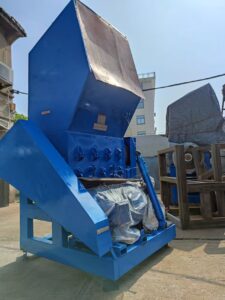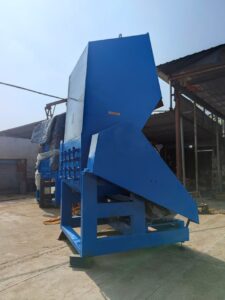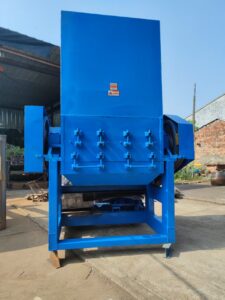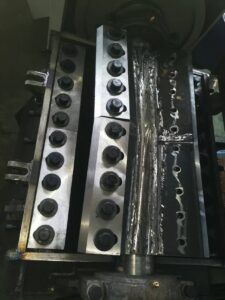In today’s resource-conscious industrial landscape, plastic shredders stand as unsung heroes. These rugged machines transform waste into wealth, bottlenecks into efficiency, and sustainability goals into tangible results. For manufacturers, recyclers, and processors worldwide, selecting the right shredder isn’t just an equipment choice—it’s a strategic business decision.
Why Plastic Shredders Are Mission-Critical

Plastic pollution is a global crisis, with over 400 million tons produced annually. Simultaneously, manufacturers demand high-purity recycled feedstock to meet ESG targets and reduce costs. Industrial shredders bridge this gap by:
-
Pre-processing bulky waste (pipes, containers, automotive parts) for recycling lines.
-
Volume reduction (up to 90%) to slash storage/transport costs.
-
Liberating materials in WEEE (e-waste) recycling.
-
Preparing consistent feedstock for extruders, injection molding, and 3D printing.
Inside the Titan: Core Components & Engineering
Modern plastic shredders are feats of precision engineering designed to withstand extreme forces. Key subsystems define their performance:
-
The Heart: Rotor Assembly
-
Slow-Speed, High-Torque Rotors: Engineered for tough materials (≥ 40 RPM).
-
Configurable Cutting Geometry: V, Diamond, or Hook profiles for film, rigid plastic, or composites.
-
Hardened Steel Construction: HRC 58-62 surfaces resist abrasion from glass-filled nylons or GFK.
-
-
The Gatekeeper: Screen Mesh
-
Laser-Cut Sieve Plates: Apertures from 6mm (granules) to 50mm (coarse flakes).
-
Tensioned Bolt-on Design: Enables rapid size changes for multi-material facilities.
-
Wear Indicators: Smart sensors alert when aperture tolerance exceeds ±0.5mm.
-
-
The Powerplant: Drive System
-
High-Inertia Motors: 15-400kW power range with IP66 protection.
-
Torque-Monitoring VFDs: Prevent jams by auto-reversing at 120% load threshold.
-
Planetary Gear Reducers: <5% energy loss vs. traditional worm gears.
-
Performance Metrics That Matter: Beyond the Spec Sheet
While manufacturers highlight parameters like Processing Capacity (t/h) or Feed Opening Size (mm), smart buyers evaluate deeper:
| Parameter | Industry Benchmark | Impact on ROI |
|---|---|---|
| Specific Energy Use | 40-80 kWh/t | Dictates 60%+ of operational costs |
| Noise Level | ≤ 85 dB(A) at 1m | Reduces OSHA compliance risks |
| MTBF (Mean Time Between Failures) | 1,200+ hours | Minimizes $15k+/hr downtime losses |
| Contamination Tolerance | Handles 8-12% non-plastics | Extends blade life 3x |
Case Study: German Auto Recycler
After switching to a shredder with hydraulic screen exchange and Siemens PLC control, they achieved:
22% higher PET purity
30-minute screen changeovers (vs. 4 hours)
€180,000/year saved in labor/maintenance
The Smart Shredder Revolution: Industry 4.0 Integration

Tomorrow’s shredders are data hubs. IoT-enabled systems now offer:
-
Real-time Blade Wear Analytics: Predictive maintenance alerts before failures.
-
Auto-Adjusting Screen Pressure: Optimizes throughput for material density changes.
-
Blockage Detection via Thermal Imaging: Identifies overheated bearings/motors.
-
Blockchain Traceability: Tracks batch origin for recycled content certification.
Choosing Your Champion: 5 Non-Negotiable Features

-
Torsion-Resistant Frame
Welded steel > 25mm thick with ribbed reinforcement absorbs shock loads from metals/rocks. -
Overdimensioned Bearings
SKF/FAG spherical rollers rated for 200% peak load prevent catastrophic failures. -
Quick-Change Tooling
Tool-free blade/screen swaps in <45 minutes maximize uptime. -
Water-Cooled Shaft Seals
Eliminate dust ingress in 24/7 operations extending seal life to 18,000+ hours. -
ATEX Zone 22 Compliance
Mandatory for handling flammable dusts (e.g., PP powders).
The Sustainability Multiplier Effect

Beyond profitability, shredders enable circular economy transitions:
-
Closed-Loop Systems: Shred-in-place programs at factories cut virgin resin use by 40%.
-
Chemical Recycling Prep: Uniform 10-15mm flakes optimize pyrolysis output.
-
Carbon Footprint Reduction: Every ton of shredded recycled plastic saves 1.5 tons of CO2 vs. new plastic.
Future Frontiers: Where Shredder Tech Is Headed
-
AI-Powered Material Recognition: Auto-sorting contaminants via hyperspectral cameras.
-
Self-Sharpening Blades: Tungsten carbide coatings regenerated by ultrasonic fields.
-
Hydrogen-Powered Mobile Units: Off-grid shredding for disaster zone cleanup.
Conclusion: The Strategic Imperative
Industrial plastic shredders are no longer mere size-reduction tools—they’re intelligent material recovery platforms that define operational viability. Whether processing post-consumer packaging or aerospace composites, the right shredder delivers:
-
Profitability through energy savings & uptime
-
Sustainability via premium recyclate output
-
Resilience against supply chain disruptions
Ready to transform your plastic waste stream? Discover how our TITAN Series shredders with 3-year performance guarantees can cut your processing costs by 35%.
